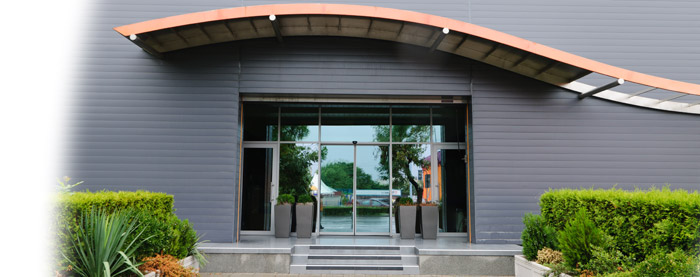-
January 13, 2015
2014 is yet another year lost for the Health reform
The intentions for changes in health care are serious, stated Minister Petar Moskov
The shadow of the health reform began to appear on the threshold of the new 2015. Obviously discussions on serious reforms have a slow start and this was evident in the last days of the calendar year when the Minister of Health Petar Moskov presented his vision for reforming the sector. A series of legislative measures are expected before April 2015.
What happened in the health sector in 2014?
The year was marked by two updates of the National Health Insurance Fund (NHIF) budget, scandal emergency crisis with baby vaccines and as a whole – year zero for reforms.
The big dispute about the money of the NHIF this year went through two updates. First in the middle of the year, and second – in the end of it. In August, the Fund’s budget was increased by BGN 225 million, and in November – with another BGN 100 million. So this year’s budget of the health care was mended after many comments for and against providing extra money.
The impotence of the authorities to rein the finances of the health care was demonstrated by the raging summer scandal in emergency aid. In the midst of the scandal with the Metropolitan Emergency different positions and suggestions were heard on what should be done so that the system can function normally. The problems of emergency physicians in the capital were demonstrated by protests that exceeded the limits of Sofia and proved the national scale of the problem. It comes to wages of workers in emergency centers, working conditions, lack of people wishing to pursue this profession, insufficient number of teams, ineffective spending, and bad management. Problems which are not new, but remained for the next year.
Another case – the lack of certain vaccines for babies drove doctors and patients up the wall in the autumn. In late September, doctors warned that the 5-valent vaccine, with which all babies born after 1 June this year should be immunized, is missing. Solving this crisis marked the brief quarterly management of the provisional Minister of Health Miroslav Nenkov who resorted to placing public procurement of 6-valent vaccine through negotiation without announcement. After the crisis found a favorable outcome, the Ministry of Health prepared a framework agreement for the supply of vaccines for the next three years. The Agreement provides the producer, who won the contract to provide vaccines for the next three years, not for one year only.
The parallel export of medicines was restricted. Parallel exports of medicinal products subject to medical prescription will be made after notification to the Bulgarian Drug Agency (BDA) and the Director of the Agency will be able to refuse with a reasoned order as long as it is established that the product is in limited amounts in Bulgaria.
The “Moskov’s” reform
By April 2015 the proposals for legislative changes in the health insurance model should be drawn up, and it is expected three health packages for medical care to be introduced – basic, upgraded and emergency. This is set in “Moskov’s reform. According to the experts, the idea actually is a proposal for a complete change of the health insurance model, which is expected to provoke serious discussions. Such as the discussions on the restructuring of health insurance – it should be specified what part of the installment will cover the basic package and what – the upgraded package.
A clear definition of the basic package of services covered by the Health Insurance Fund is expected, i.e. the treatment of the most common diseases that lead to the greatest mortality in the country. According to the intentions of the Health Minister the additional package will cover non emergencies conditions or socially significant diseases, it will give the opportunity for additional payments, for this second pillar insured will be able to choose between installments to the Health Insurance Fund or private funds.
The third, so-called emergency health package actually means developing clear criteria for emergency – something the emergency physicians have long demanded. Clearly regulated criteria for dividing the real emergency patients from those seeking ambulance for everything are expected. Persons without health insurance can use this particular package of services, and the insured persons will have the basic package so that each insured person will be treated for all diseases. The Ministry of Health is expected to define the criteria for emergency and to clarify the question of who pays for the medical service received if the patient does not meet the noted criteria.
The case of people without health insurance, about two million, is about to get a partial solution. Raising the fee for recovery of health care rights, as a way to curb the possibility for easy entry and exit from the health insurance system is proposed. Currently the reentry in the system of one uninsured is about BGN 600. The proposal is the restoration of the health care rights to be BGN 2000.
There will be changes in medicinal policy. The introduction of centralized negotiations of various discounts on medicines by the Health Insurance Fund is prepared. The idea provides that the Fund will not pay for the medicines if the manufacturer does not provide a discount.
Moskov wants the supervision of the NHIF to determine the list of medicines which will be covered by the Fund with public funds.
The introduction of a mechanism for health technology assessment in the application of medicinal products is proposed. When assessment proves the lack of effectiveness in the implementation of a certain drug, the amounts paid by Heath Insurance Funds for it will be refunded to the budget of the Health Insurance Fund.
The changes provide for gradual increase in the contribution from the state for groups provided by it in increments of 5%, and it will start in 2016. The termination of a contract with medical service provider is stipulated, if systematic dissatisfaction of patients is observed, and the termination of a contract in the event that the quality requirements are violated.
Will these measures solve the problem with the draining of the NHIF and will they close the holes in the fund so as to achieve a balance in the system, these are the questions we expect to get an answer to in the new 2015. -
The NHIF will pay 100% the covered medicines not to the pharmacies but to the producer
The general practitioners, who treat patients in remote areas of Bulgaria, will be allowed to sell medicinal products to patients – irrespective of whether the medicines are prescription or not.
This is foreseen in the amendments that the parliamentary health committee will begin to consider, announced its chairman Gen. Stoyan Tonev. The idea is the planned reforms in medicinal policy to take effect from April.
Currently many Rhodopean villages or areas in northwestern and northeastern Bulgaria have no pharmacies for tens of kilometers, so patients manage as they can – either someone goes to the city and fulfills the prescriptions for the sick or each seeks relatives and neighbors for help. “Since many years in Switzerland the general practitioners sell medicines” said General Tonev. And from the NHIF reminded that in Germany this practice was introduces in the eighties of the last century.
The remote GPs practices here are around 400, and in some cases the family doctor is responsible for 400 people, in other – for 800 or more. That is, the change in legislature will relieve hundreds of thousands of sick Bulgarians who live in the mountains, at the borders or in the hamlets far from pharmacies.
“With a new text in the Law on Health Insurance we consider to return back the model in place until 2008, according to which health fund paid 100% of covered medicines not to pharmacies, as it is now, but to their manufacturers or distributors”, said General Tonev.
He explained that the idea is, skipping the surplus charges, the NHIF to realize at least 7-12% savings on the annual amount for medicines, and in the best case – 25%. This year, the Health Insurance Fund will provide nearly BGN 720 million for medicines for home treatment and for cancer medicines. That is, if the amendment becomes fact, the Fund will pay between BGN 50.5 million and BGN 180 million less for entirely free medicines. We are talking about 217 medicines from over 2000 which are in the positive list.
About half a million Bulgarians receive through protocol completely covered medicines which are mainly for treatment of cancer, blood diseases, rare diseases, diabetes, multiple sclerosis and others. “The patients will still get their medicines from the pharmacies and if they refuse to provide the expensive therapy because the NHIF will not pay them, then they may be refused a contract with the fund”, said also General Tonev.
According to the distributors, however, the idea is difficult for realization; many questions and problems arise and a lot of legislative changes are required. For example, how, if the Fund does not pay the pharmacy, the distributor will deliver the medicine without invoicing it, which is a violation of the tax laws, or how the Fund will know to which provider to pay (i.e. a serious reporting and electronic system is required).
Pharmacists challenged the idea: Everyone should work what he/she studied
If the changes become a reality, there is no guarantee that the free medicines will reach the pharmacies. The reason is that the distributors will have interest to deliver them to all pharmacies, as the Fund pays for every delivered 100% covered medicine. Secondly – if the distributor does not have money or has not concluded a contract with the manufacturer of a certain product, the distributor also may not make the delivery. At the moment the Ordinance allows doctors to sell medicines, provided they have RHIF permission. The medicines that are provided by them may be prescription or non-prescription, but without those covered by the Health Insurance Fund, the pharmacists clarified. -
Telmisartan, which relates to the group of angiotensin receptor blockers (ARB), is distinguished from other sartans with its optimal pharmacokinetic profile and with some unique pharmacodynamic characteristics.
Thanks to this, telmisartan has favorable gluco-metabolic effects – cardiometabolic sartan, and can be regarded as an antihypertensive agent of choice in patients with the simultaneous presence of arterial hypertension (AH) and metabolic syndrome and/or impaired glucose tolerance, or diabetes type 2 (DT2).
The metabolic syndrome, which is associated with insulin resistance, is a combination of common cardiovascular risk factors such as hypertension, impaired glucose homeostasis, visceral obesity and atherogenic dyslipidaemia in the same individual.
The lack of universally accepted definition hinders the collection of accurate epidemiological data, but it is assumed that 10-25% of the population in the developed countries fulfill the criteria for this disease.
The reasons for this very high rate of prevalence are probably the widespread availability and easy access to high calorie (high in fat and refined carbohydrates) foods and a sedentary lifestyle. The presence of metabolic syndrome, in turn, implies a two to four-fold higher risk for cardiovascular morbidity and mortality, and five to nine-fold increase in the risk of developing DT2
Why choose exactly telmisartan in the presence of metabolic syndrome?
The main aim in the treatment of patients with metabolic syndrome is to reduce insulin resistance, and thus to prevent the occurrence of DT2 and adverse cardiovascular events.The renin-angiotensin-aldosterone system (RAAS) plays a key role in the pathogenesis of insulin resistance and cardiovascular complications in patients with or without the presence of DT2. Therefore, blocking the RAS with angiotensin-converting enzyme inhibitors (ACEi) or with ARB is the basis of modern therapy in this population.
Telmisartan is the only sartan that has the unique effect of partial agonist of peroxisome proliferator activated receptor-gamma (PPAR-gamma). This receptor affects gene expression related to carbohydrate metabolism.
For its agonists, pioglitazone and rosiglitazone, It is proven that its agonists, pioglitazone and rosiglitazone, improve the insulin resistance in patients with DT2. Accumulated is also significant amount of evidence that activators of PPAR-gamma have anti-inflammatory, antiproliferative and antioxidative effects on vascular cells, thus reducing the risk of developing atherosclerosis.
The results of some preclinical and clinical studies have shown that administration of telmisartan can improve the carbohydrate and lipid metabolism (due to insulin sensibilisation effect) without exhibiting undesirable side effects associated with taking full PPAR-gamma agonists.
Furthermore, telmisartan has longer lasting antihypertensive effect compared with the other ARB, which is probably due to the longest half-life the medicament (almost 24 hours) and the highest affinity for the type 1 angiotensin II receptor.
Telmisartan also has the highest lipophilicity compared to other sartans that provides the largest volume of distribution and facilitate its penetration in various organs and tissues.The superiority of telmisartan over other sartans in terms of 24-hour BP control, especially in the early morning hours is proven. The described here unique qualities make telmisartan the recommended sartan, especially in cases where AH is accompanied by metabolic syndrome or DT2.
Tchaikapharma High Quality Medicines Inc. now produces telmisartan under the trade name Telsart.
Telsart is on the list of NHIF with the following code and price:
Telsart 80 mg x 28 tabl. – CG021
Price of free sale – BGN 5.64
Reimbursement – BGN 2.64
Additional payment by the patient – BGN 3.00
Telsart has lowest price compared to all other competitors on the market – the additional payments under NHIF is only BGN 3.00 For other telmisartans the patient has to pay from BGN 5.15 to BGN 8.25. Calculated on the number of tablets Telsart again has the lowest price – BGN 0.11 per tablet.
For further information on Telsart please check here:
Телсарт -
Tchaikapharma High Quality Medicines Inc. received Marketing Authorization for Pizona – a new medicine for diabetes.
Tchaikapharma High Quality Medicines Inc. received new Marketing Authorization for the medicinal product Pizona 15 mg, Pizona 30 mg and Pizona 45 mg tablets subject to medical prescription.
Pizona contains the active substance pioglitazone and is an anti-diabetic medicine used to treat type 2 (non-insulin dependent) diabetes mellitus. This is the diabetes, which usually occurs in adults.
Pizona helps control the level of blood sugar in type 2 diabetes by helping the body better use the insulin it produces. The attending physician checks whether Pizona is producing the desired effect within 3 to 6 months after initiation of the therapy.
Pizona tablets may be used alone or in combination with metformin and/or sulfonylurea derivatives, which are also oral antidiabetics. The medicament may also be used in combination with insulin.
-
December 16, 2014
The team of “Tchaikapharma High Quality Medicines” wishes you warm and happy Christmas and New Year holidays!



